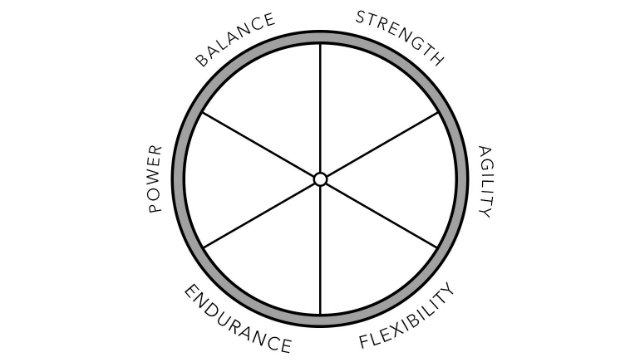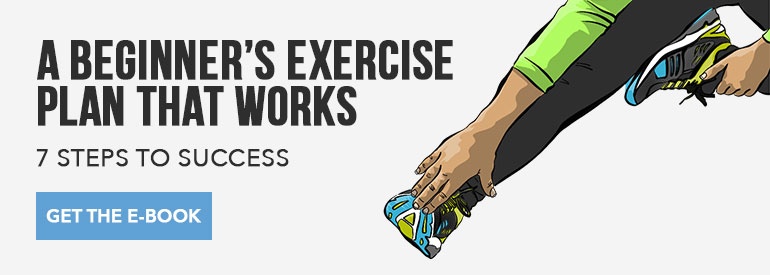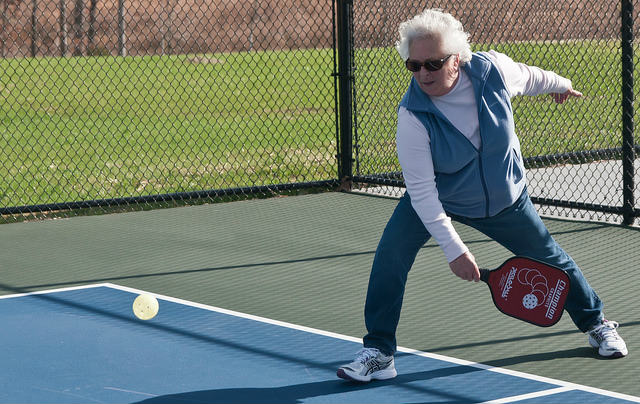 Reading Time: 7 minutes
Reading Time: 7 minutesIf you’re like me, odds are you have at least one type of exercise you love and at least one type you hate. And, if you’re like me, I’m betting you tend to choose to do the exercise you love far more often than the one you can’t stand.
It’s long been my assertion that to find true success in fitness, you need to find a way to move your body that moves you. It stands to reason that if you enjoy the way you’re moving, you’re more likely to stick with it.
But real joy can be an elusive concept for many of us when it comes to our exercise plan. In my experience, both personally and professionally, it’s not necessarily joy that gravitates us toward exercise — we’re just more likely to do whatever is habitual or natural to us. Runners tend to run, lifters tend to lift, and dancers tend to dance. Women with more natural flexibility tend to make up the majority of yoga classes and men tend to be likelier participants in throwing weights around at the gym.
Not to paint with too broad a brush — there are many exceptions to every rule. But given the choice, human beings will take the path of least resistance, which for many of us means moving in the way that comes easiest to us. Following your natural inclinations regarding exercise may seem like a good path. Better to move or exercise in any way possible than to not move at all, right? Not really.
Too much of any one mode of exercise will likely bring breakdown, burnout, and limited results. Not to mention, this strategy typically brings neither physical growth nor a sense of enjoyment. Ultimately, a balanced approach is essential for lasting success in our fitness training, both physically and mentally.
Here are five ways you can make the most of your exercise plan — and bring both physical balance and emotional joy to the equation.
1. Draw Your Wheel of Fitness
If you’ve ever attended a personal development workshop, you may have done an exercise where you drew segments of your life (health, family, work, spirituality, etc.) in a wheel and shaded the segments to the level of your current satisfaction or proficiency.
The idea is that the wheel of life doesn’t turn effectively without balance. Specific to fitness, our “wheel” might be made up of “spokes” that include strength, endurance, power, flexibility, balance, and agility. If one of our spokes it too long or another is unattended to and broken, then our wheel won’t work. It takes balance for the wheel to turn.
Action: Sit down and draw your wheel or look at the one below. What “spokes” are you currently attending to and which are missing from your fitness wheel?

2. Work on Your Balance, Figuratively
One of my least favorite questions that my fitness clients ask is, “Should I do more cardio or more weights?” My snarky retort is always, “Yes!” My more scientific answer is, “It depends on the situation.” (For a deep dive into this topic, check out the book Which Comes First, Cardio or Weights?)
The practical answer is that a balanced approach is the key to sustained success in fitness. Flexibility is as important as strength, rest is as important as work, and mindfulness provides an important balance to intensity. While finding exercise you enjoy enough to stick with is optimal, achieving lasting results requires the willingness to do the things we don’t necessarily prioritize or enjoy as much.
Action: If you are currently focused on cardio, schedule a session at the weight room this week. If you are all about lifting, then schedule a time to walk, run, hike, swim, or cycle this week. If that doesn’t sound like fun at all, then look for a class or group to join that will help make the experience more fun.
3. Work on Your Balance, Literally
Longevity research suggests that good balance is associated with a younger “functional age” (a combination of physical, emotional, mental, and actual chronological age). For instance, those who can balance on one leg with their eyes closed for 28 seconds have a functional age of 25 to 30 years old, whereas those who can only hold for 4 seconds have a functional age of 70 years old. Balance is also correlated with better cognitive performance and less anxiety.
Action: To achieve better balance, start with simply standing on one leg with your eyes open, and then practicing with your eyes closed as you progress. Other ways to train balance include yoga, which incorporates balance-related poses, and martial arts like tai chi or qi gong.
4. Commit Yourself to Try Something New
Though it was never a popular sentiment with the top brass of the fitness companies I worked for, I routinely encouraged my clients to take a break and try other opportunities for exercise and movement. Athletes don’t compete year round. They have seasons and, within each season, athletes periodize their training to maximize gains and take advantage of planned recovery.
While most of us aren’t “athletes,” this seasonal approach is still sound. Change is a key that the unlocks the potential for growth. A good way to achieve balance in trying new activities is to match the real seasons with your own:
- Autumn may be a good time to begin the migration indoors and lay the foundation for hard training at the gym. As autumn approaches, try scaling down activities outside and doing lots of bodyweight exercises in preparation for heavier resistance.
- Winter may call for heavier resistance and eating more calories to support muscle growth.
- As spring approaches, the focus can be on the migration back outdoors through interval training and laying the foundation for more endurance.
- Summer is the time to enjoy the fruits of your labor in expressing your endurance outside — hiking, biking, running, racing, and swimming.
Of course, these are general examples of how you might approach the seasons. The basic idea is to approach your training the way an athlete approaches it – with a plan (and a sense of adventure).
Action: Get a piece of paper and pen or pencil. Write down the four seasons and think of the types of exercise you would enjoy during those times. What new activities you want to try fit each season best? What is something you’ve always wanted to learn? Consider your short-term and long-term goals. How do they potentially fit into these seasons?
5. Plan Your Recovery
Part of the yin and yang of moving your body is resting your body. But when is the last time you went to the gym or an exercise class where they talked about sleep, active recovery, or rest? Gym culture tends to promote topics like “toning” muscle, the best protein powder, or the latest fitness craze. How to rest effectively is mostly an afterthought.
Sleep should be at the top of your recovery priority list. Lack of sleep is correlated with everything from weight gain to diminished athletic performance to mortality. It stands to reason that good health follows great sleep, considering we spend roughly one third of our lives doing it. Shawn Stevenson, author of Sleep Smarter (a compelling analysis on the importance of sleep), said that when it comes to achieving peak performance and optimal health, “Sleep is the force multiplier.”
Action: The bottom line is you can be dialed in with the pillars of diet and exercise, but if you aren’t getting six to eight hours of quality sleep, your health will be compromised and your goals will remain elusive. You’ll enjoy all your fitness activities more if you’re well rested and full of energy.
How to Find Balance and Joy in Your Exercise Plan
There are always things we have to do to be successful in life that we don’t necessarily enjoy. There are surely parts of your job or raising kids that you’d prefer to skip. The same applies to your health and wellness. Just because fitness may seem like an “elective” in life, doesn’t mean you can skip the unpopular and less appealing parts. Your health deserves your best effort — and the best approach is a balanced approach.
That said, with a little planning and creative thinking, you can find ways to enjoy all the parts of your fitness plan in the end. Yes, you need all the spoke of your fitness wheel to be working, but you also want to enjoy the ride.












